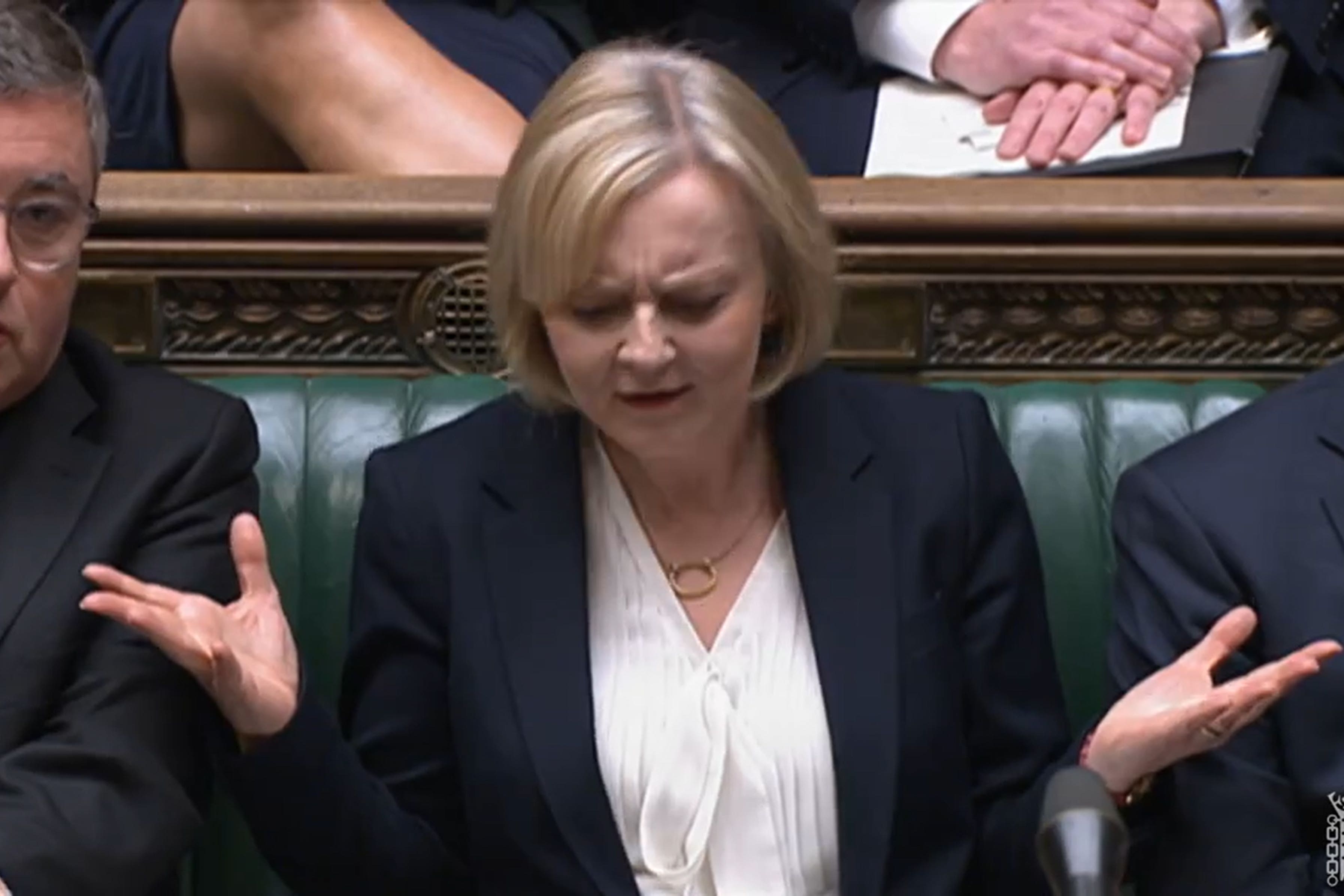What next for Liz Truss as she fights for political survival?
The Prime Minister is clinging on to power by her fingertips after Suella Braverman’s resignation and ugly, chaotic scenes during a Commons vote.

Your support helps us to tell the story
From reproductive rights to climate change to Big Tech, The Independent is on the ground when the story is developing. Whether it's investigating the financials of Elon Musk's pro-Trump PAC or producing our latest documentary, 'The A Word', which shines a light on the American women fighting for reproductive rights, we know how important it is to parse out the facts from the messaging.
At such a critical moment in US history, we need reporters on the ground. Your donation allows us to keep sending journalists to speak to both sides of the story.
The Independent is trusted by Americans across the entire political spectrum. And unlike many other quality news outlets, we choose not to lock Americans out of our reporting and analysis with paywalls. We believe quality journalism should be available to everyone, paid for by those who can afford it.
Your support makes all the difference.Liz Truss has been Prime Minister for just over six weeks but may already be facing eviction from No 10 as her party turns against her.
– How did we get here?
Liz Truss was elected as Conservative Party leader on September 5 and took over as Prime Minister the following day. Her premiership had barely begun when politics ground to a halt following the death of the Queen.
The pivotal event of her time in office was then-chancellor Kwasi Kwarteng’s mini-budget on September 23, which triggered turmoil in the financial markets and required an emergency intervention by the Bank of England to support Government bonds.
A chaotic party conference followed, overshadowed by a U-turn on the policy to scrap the 45p rate of income tax, with daunting poll leads for Labour adding to unease on the Tory benches.
Mr Kwarteng was sacked and replaced by Jeremy Hunt, who junked almost all of the tax cuts which had been a key part of Ms Truss’s appeal to party members.
Things seemed to have calmed down until the calamitous events of October 19.
– So what happened on Wednesday?
Ms Truss was defiant at Prime Minister’s Questions, insisting “I am a fighter, not a quitter” and promising to protect the triple-lock on pensions increases, something which had been another bone of contention with her backbenchers.
But things unravelled in dramatic fashion after that, with Suella Braverman resigning as home secretary over a breach of ministerial rules relating to sending an official document from her personal email.
Her resignation letter suggested the real reason for her departure was a blazing row with Ms Truss over immigration policy, raising “serious concerns” about the Government and its “commitment to honouring manifesto commitments, such as reducing overall migration numbers”.
On Wednesday evening there were ugly scenes in the Commons as Tory MPs were ordered to vote against a Labour motion on fracking.
Chief Whip Wendy Morton was rumoured to have resigned, only for No 10 to confirm she remained in place.
– Can the Prime Minister survive?
While only a handful of Tory MPs have publicly called for Ms Truss to quit, speculation is rife that dozens have submitted letters of no confidence to Sir Graham Brady, chairman of the backbench 1922 Committee.
Ms Truss is protected from a confidence vote during the first 12 months of her leadership, but if it became clear she could not command the support of her MPs it would appear impossible for her to continue.
– How might Ms Truss be removed from office?
If she is forced to resign, that could trigger a leadership contest – something the party may be keen to avoid, given that the fallout from the race between Ms Truss and Rishi Sunak is partly to blame for the toxic atmosphere within the Tory ranks.
It could be possible for the 1922 Committee to engineer the rules to ensure that only candidates with a very large number of MPs supporting them could go through – something which could, in effect, result in a coronation if the threshold was so high that only a single contender emerged.
That would avoid the need for a lengthy contest involving party members across the country casting votes.
– Are there any other scenarios?
When David Cameron quit, the leadership contest did not go to a vote of party members as Theresa May was left unopposed following Andrea Leadsom’s withdrawal from the race – although MPs had taken part in a series of votes to get to the final two.
In 2003, there was no contest but instead a coronation as Michael Howard took the job unopposed.
But finding a unity candidate in the current Tory Party would appear to be a tall order.
– Who might take the job?
In the absence of a compromise candidate – or one who can strike a deal with rivals from other wings of the party – it appears unlikely that critics of Ms Truss will have the ready replacement required for a coup to succeed.
Names bandied around as potential successors have included Boris Johnson – despite being forced out earlier this year – Kit Malthouse, Grant Shapps, Sajid Javid, Rishi Sunak and Penny Mordaunt.
Defence Secretary Ben Wallace, a popular figure within the party, has insisted he wants to remain in his current job, while Jeremy Hunt is currently effectively exercising power as Chancellor, having dismantled Ms Truss’s economic platform.
The departure of Ms Braverman from the Government could make her a focal point for MPs on the Tory right, but she is unlikely to prove a unifying figure.